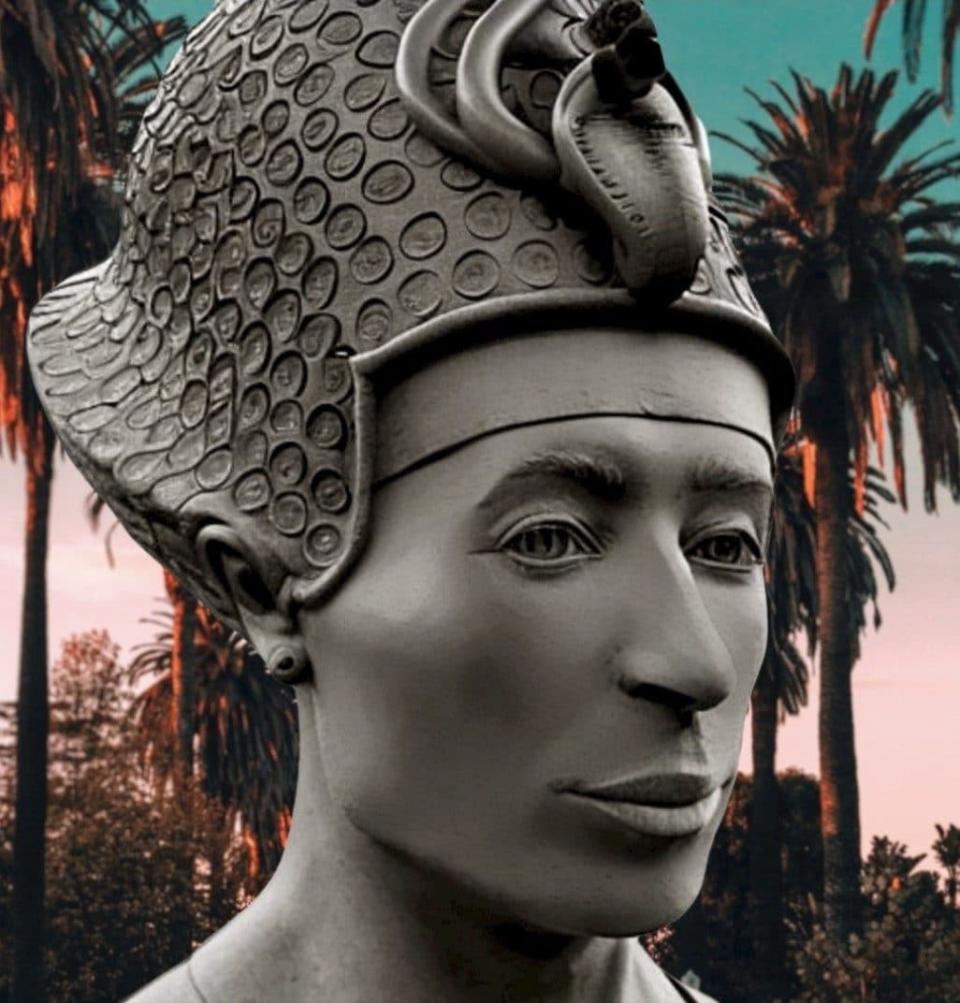Tutankhamun’s face revealed for the first time

Tutankhamun’s face has been revealed for the first time thanks to a sculptor who worked with Prince Philip.
Christian Corbet, who sculpted Prince Philip in 2013, used a 3D model based on scans of the pharaoh’s skull to bring the ancient Egyptian "boy king" to life, with the end result being called one of the most realistic reconstructions of Tutankhamun ever created.
Andrew Nelson of Canada’s Western University, who took the scans of the ancient ruler’s skull, said: "We worked from the 3D model of the skull, and then we added the layers of muscle and actually built up the face.
"The anatomy of his skull guided the facial reconstruction, so I think it's a much more realistic appearance than any of the ones we’ve seen in the past."
The team used computed tomography (CT) scans to create an accurate 3D model of the skull, as well as tissue markers indicating the depth of the flesh at different places based on modern Egyptians.

Previous reconstructions of mummies have used tissue markers based on Caucasian subjects.
Mr Corbet said: "I then built the muscles up layer by layer until the forensic reconstruction was complete.
"The forensic sculpture was based on the science of the skull, and the tissue markers and the measurements of each were based on the average male Egyptian subject.
"There is no creative licence here. Every stage was also photographed to prove my work."

The forensic bust has its eyes shut, no ears and no expression, but once it was complete Mr Corbet was able to "be more creative and open his eyes, angle directions to the eyes, and perhaps add a bit of an upturn of the lips".
"But again there was no fabricating the features – even the ears were carefully thought out by all of us."
A khepresh or war crown was added, which referenced period sculptures of Tutankhamun wearing the crown.
One challenge of the recreation, which was produced for a documentary on Tutankhamun, was that the software needed to be shown how to distinguish between the skull itself and the resin-soaked linen that had been used by ancient Egyptians to preserve the shape of the pharaoh’s face after mummification.

Mr Corbet said: "In sculpting the duke, I could at least interview him from the many sittings I had with him; I could talk and chat, and watch his gestures and his incredible intelligence."
He added that he was sure the pharaoh would have approved of the final piece.
"In some magical way, he reminded me he was a pharaoh and granted approval of the completed work," he said.
"As an artist, you just know when something is right."

 Yahoo News
Yahoo News 